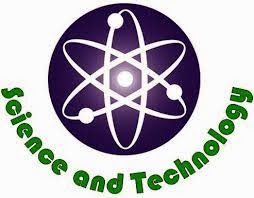Science and technology key to leveraging region’s resources
Lazarus Sauti
SADC leaders recently
agreed that economies in regional countries are still dominated by low-level
processing of natural resources and the production of simple consumer goods for
local consumption.
Most countries in the
region are far from making any internationally significant scientific or
technological breakthroughs; and what ultimately distinguishes the region from
others is its lack of mastery of modern science.
Countries in the
region, excluding maybe South Africa, have a poor reputation for scientific and
technological innovations.
This is sad because
with its vast resources, the region should be able to improve its development
capacity in critical development areas of science and technology.
In short, SADC needs to
build its capacity in science and technology if it is to realise its dream of
moving towards beneficiation and value addition and compete with other regions.
President Robert Mugabe of Zimbabwe was spot on when he told the just ended
SADC summit in Victoria Falls that the region needs to build capacity through
solving challenges that are halting development.
The SADC region
religiously needs science and technology to leverage its diverse resources for
sustainable economic and social development through beneficiation and value
addition. Without science and technology, the region cannot benefit anything
from its resources – both human and natural.
“Science and technology
are building blocks critical to the transformation of the SADC region,” notes
Collence Chisita, a Harare based researcher, adding that “it is, therefore, of
critical importance for countries in the region to make effort in creating
conditions conducive for the growth of science and technology industries.”
Sharing the same views,
researcher David Ockwell, says science and technology are critical ingredients
that can be used to effectively transform communities through job creation and
poverty eradication.
“Science and technology
are the most effective means to enhance growth and socio-economic development
of nations as they have profound and long-term impacts on income distribution,
economic growth, employment, trade, environment and industrial structure,”
asserts Ockwell.
As regional leaders are
still fresh from their 34th summit, it is critical for them to promote science
and technology advancement as a much more lasting investment that offers surer
and higher returns than continuously funneling aid dollars for short-term
solutions.
One sure way of promoting
science and technology is through crafting policies, strategies and plans that
not only allow countries to harness science and technology for development but
also provide the thrust for deeper regional integration.
To establish these
policies and strategise for serious economic development, and to provide the
impetus for deeper integration among SADC member states, leaders and other
critical policy decision makers in the science and technology fraternity must
be realistic and be guided by instruments such as the Protocol on Science,
Technology and Innovation in coming up with mechanisms that put science and
technology at the heart of leveraging the region’s resources.
Leaders can also
propagate the adoption of science and technology simply by producing a mass of
young scientists.
“SADC leaders must
embrace science and technology by producing competent young scientists and
simply creating enabling environments that promote effective partnerships and
knowledge sharing. The main goal should always be strengthening the
transformation agenda of the region,” adds Chisita.
Private Public
Partnerships are, therefore, vital in promoting science and technology as well
as in building academies and centres of excellences to lay the ground work for
building science and technology capacity in the region.
“Through evidence-based
science by homegrown experts, science academies and centres of excellences can
become trusted advisors on social and economic development issues,” notes
Nelson Sewankambo, president of Uganda’s National Academy.
As appropriate
education is also central to the adoption of science and technology and,
transformation of economies, there is need for the regional bloc to pursue
relevant education, with science related subjects being at the core of the curriculum.
This, however, calls
for sufficient funding of universities and research institutions.
Sadly, such
institutions in the region are still in the unfortunate position of not being
able to invest in science and technology.
This means parliaments
in SADC countries need to commit at least one per cent of GDP to science.
Frankly, greater
cooperation between SADC member states and other countries in science related
areas is of critical significance to increase trade and drive the expansion of
the region. Erastus Mwencha, Deputy Chairperson of the African Union
Commission, agrees: “There is need for strategic coordination, knowledge
sharing and commitment in advancing science and technology for the overall
socio-economic development of the region.”
Therefore, SADC
countries should not only cooperate with other countries but they should
promote science and technology as key drivers of change and pin their hopes on
science and technology to effectively leverage their vast natural resources as
well as transforming their developing economies.


Comments
Post a Comment